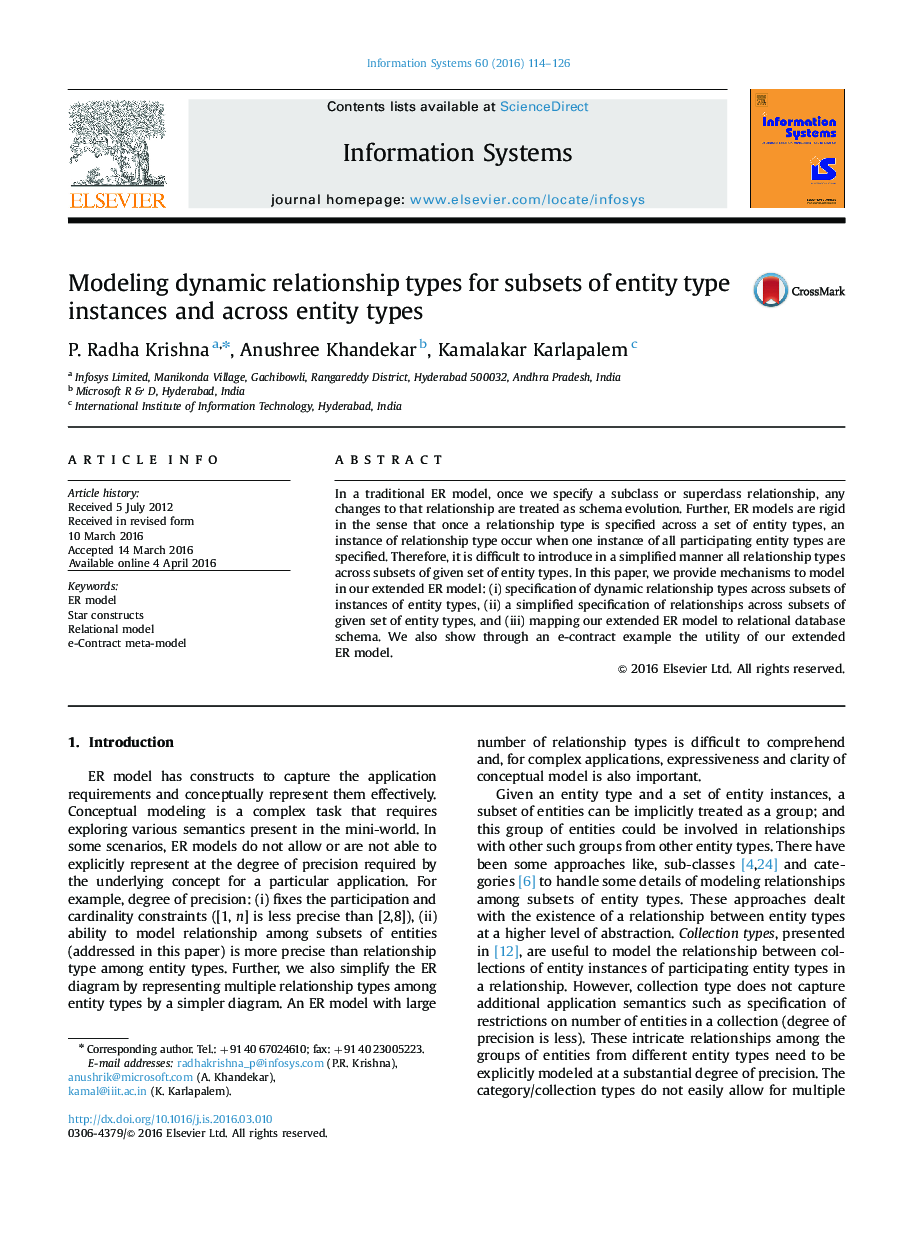| Article ID | Journal | Published Year | Pages | File Type |
|---|---|---|---|---|
| 396787 | Information Systems | 2016 | 13 Pages |
•A new entity type named star-entity (*-entity) type which facilitates participation of subsets of entity instances is introduced.•A new relationship type named star-relationship (*-relationship) type which relax the relationship type to permit flexible relationships among entity types participating in a relationship instance is introduced.•Presented effective modeling of e-contracts database requirements by using proposed *-entity type and *-relationship type constructs.•The mapping of *-entity type and *-relationship type to relational data model is developed.
In a traditional ER model, once we specify a subclass or superclass relationship, any changes to that relationship are treated as schema evolution. Further, ER models are rigid in the sense that once a relationship type is specified across a set of entity types, an instance of relationship type occur when one instance of all participating entity types are specified. Therefore, it is difficult to introduce in a simplified manner all relationship types across subsets of given set of entity types. In this paper, we provide mechanisms to model in our extended ER model: (i) specification of dynamic relationship types across subsets of instances of entity types, (ii) a simplified specification of relationships across subsets of given set of entity types, and (iii) mapping our extended ER model to relational database schema. We also show through an e-contract example the utility of our extended ER model.
